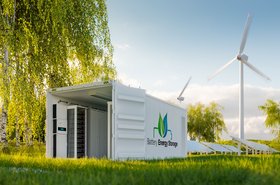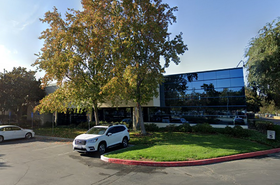Data centers are the backbone of the online digital world we all rely upon - and they are increasingly adding much-needed resilience and flexibility to energy generation and distribution networks.
Thanks to technological innovations and corporate focus on sustainability through initiatives such as the Climate Neutral Data Centre Pact, most data centers are already highly efficient consumers of electricity.
The International Energy Authority states that whilst the number of internet users worldwide has more than doubled, and global internet traffic has expanded 25-fold since 2010, rapid improvements in energy efficiency have helped limit growth in energy demand from data centers. Today, in total, data centers represent only approximately 1.5 percent of total global energy consumption.
However, the vision for the sector goes beyond efficiency and sustainability. Data centers have an emerging and important role as intrinsic elements of both digital and integrated energy infrastructures – essentially, the fundamental backbone of our connected way of life.
Many data centers are striving for more symbiotic relationships with energy grids, becoming managers and even providers of a wide range of energy services. Built to be resilient, flexible, and highly automatable, they can help balance volatile generation with demand, provide reserve power when needed, and offer critical load balancing to grids.
Shifting the load
Sustainable generation, including wind and solar power, now represent an increasing proportion of energy capacity, but these sources are sometimes unstable. When the skies are dark or the wind drops, generation capacity falls.
Whilst some data center workloads are extremely time-critical and latency-sensitive, many are not. For example, AI model training, although a compute and energy-intensive task, can be shifted to times when energy is more plentiful.
The advanced automation of today’s data center management systems means that workloads such as these can be scheduled and turned off and on to match peaks in sustainable energy generation. In effect, data centers can balance supply and demand to stabilize variable generation, thus reducing the need to fall back to more carbon-intensive peak generation technologies like natural gas.
Loads can also be shifted geographically. Linking data centers with high-speed, high-capacity data transmission connections allows them to be managed as unified resources so that workloads can be moved seamlessly from one location to another. Work can therefore move to where the power is, maximizing the use of renewable energy when and where it is available. This also minimizes losses incurred in power distribution. The further energy must travel along power lines, the more that is lost as heat through electrical resistance and other impediments; overall, it is estimated that between eight and 15 percent of the total energy generated is lost in transmission. Moving workloads as close to generation as possible improves energy efficiency and is another benefit data centers can bring to managing power consumption.
Millisecond resilience
To provide the always-on resilience required by their customers, data center providers also have significant abilities to store power. The uninterruptable power supply (UPS) facilities they operate, as well as emergency generators, can be integrated into wider energy grids to deliver benefits to communities. In an increasingly electrified society, demand for energy can form peaks that stress the grid in much the same way as rush hour traffic leads to congestion on roads.
Using sophisticated algorithms and millisecond-by-millisecond management, data center UPS systems can help grid operators smooth voltage peaks that could otherwise damage distribution grids causing blackouts.
Stack's work with Fortum Spring in Oslo, integrating our data centers’ UPS into Fortum Spring’s systems, helps improve the resilience of the electricity grid across the whole of the Nordic region.
The UPS has software with the Fast Frequency Response (FFR) feature, which senses an incoming grid frequency and can use its batteries to regulate frequency when necessary and within a defined set of parameters - i.e., max/min Hz, available battery capacity, etc. The basic use is to lift the frequency back up by sending energy back on grid from batteries. Frequency on grid will go lower as a result of sudden high loads, or sudden loss of production capacity.
Many UPS together make up a bank with substantial capacity for quick support. The feature is not always active, but grid companies can activate/deactivate from their control systems connected via the network.
Energy reserves
Using a UPS can mitigate voltage spikes lasting seconds to a few minutes, but data centers also have longer-time backup power facilities in the form of generators. Although some are currently diesel-powered, increasingly more sustainable energy backups in the form of hydrogen, or even long-term batteries are being deployed. The primary function of these backup power supplies is to keep the data centers operational should grid power be interrupted for any reason.
Many of the workloads in data centers are critical in themselves; for example, communications networks, emergency services, and hospital management technologies are commonly hosted in data centers. However, these redundant energy supplies can also be pooled into reserve capacity that can instantly come online when required.
In Switzerland, Stack’s data centers contribute energy generation capacity to the ‘Winter Reserve’ operated by Swissgrid to meet emergency additional energy demand during a cold winter.
Investing in the future
These practical applications are already putting data centers at the heart of integrated digital and energy networks. They also leverage the significant investments made by the sector into sustainable generation.
As buyers of sustainable energy through power-purchase agreements (PPAs), the sector has helped create a stable market and the case for building sustainable energy generation plants. BloombergNEF, a research company, estimates that the data center industry has helped create 74 gigawatts of capacity through its use of PPAs.
Looking to the future, the sector is also pioneering new sustainable energy generation technologies that build on the firm foundations already built to reinforce data centers’ position as the backbone of a digital and connected society. What we have already learned, and demonstrated, is that to move forward we must collaborate across all areas of the economy and society.
Data centers are indispensable infrastructure for the digital economy. They are rapidly becoming a fully integrated part of a digital and energy ecosystem that will power not only the services we rely upon now but also the innovations and technologies that will supercharge progress in the future.





